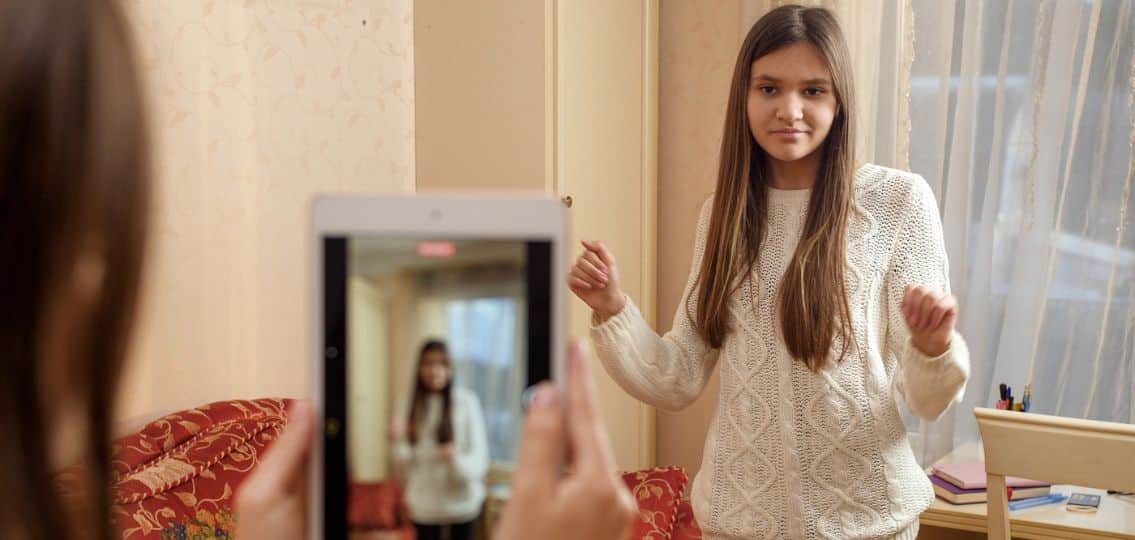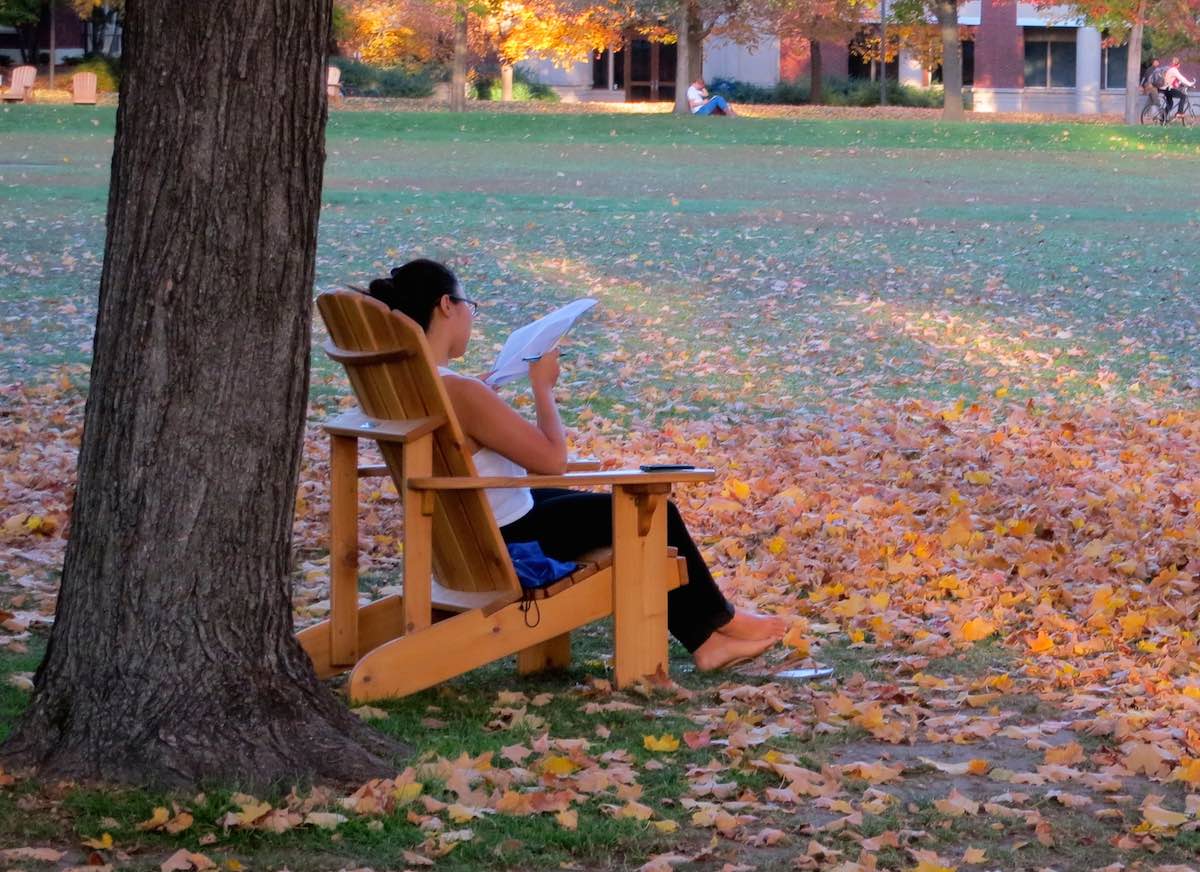Every night, soon after her husband and two kids went to bed, Robin Masters’s house would fill with the rumble of snoring. Her youngest, Blair, was always the loudest. “You could hear him through the whole house,” she recalls. She never thought much of it, but when Blair began showing signs of being chronically tired and was getting sick all the time—so much so that he missed 50 days of junior kindergarten—she knew something was wrong.
The answer came after Blair was diagnosed with yet another bout of illness, this time pneumonia. A respirologist asked Masters if she thought her son, who was nearly four at the time, might have sleep apnea. The idea had never crossed her mind. “I was always under the impression that it was older, overweight men who got it,” she says. To confirm the diagnosis, Blair underwent a sleep study. During the overnight observation, doctors found his tonsils and adenoids were partially blocking his airways, causing his breathing to be interrupted roughly 49 times an hour throughout the night. He was diagnosed with an extremely severe case of obstructive sleep apnea.
What is sleep apnea?
Sleep apnea occurs when there are pauses in breathing at night; this causes oxygen levels to fall, and the body has to rouse itself to start breathing normally again. “If this were a one-off, it wouldn’t be a problem,” says Indra Narang, director of sleep medicine at SickKids and assistant professor of paediatrics at the University of Toronto. “But the problem with sleep apnea is it occurs many times a night.” Over time, all of these little arousals lead to sleep deprivation. “That really impacts young children, who are at critical stages of their brain development,” says Narang.
Long considered a condition that only affected adults, sleep apnea is being diagnosed in kids more and more often. “I can’t even tell you the extent of the problem,” says Narang. “It’s huge—and it’s being compounded by obesity.” While about four percent of otherwise healthy kids have sleep apnea, Narang says 25 percent of all obese children will experience the disorder.
The most common form, called obstructive sleep apnea, occurs when something is actually blocking part of the airway. In kids ages two to eight, enlarged tonsils and adenoids are usually to blame. Older kids and adults are more likely to develop the condition because of excess weight that causes the airway to collapse during sleep or increases the amount of tissue in the throat and mouth. Kids with Down syndrome or birth defects such as a cleft palate are also at an increased risk for having airway obstructions that lead to sleep apnea.
What are the signs of sleep apnea in kids?
Snoring or noisy breathing is the most common sign that air isn’t getting through properly. “Snoring is sort of a prerequisite,” says Fuad Baroody, director of paediatric otolaryngology at the University of Chicago Medicine and the Comer Children’s Hospital. About 10 percent of children snore most nights, but while almost everybody who has obstructive sleep apnea snores, not every snorer has apnea.
David Wensley, a paediatric respirologist and intensive care physician who runs the diagnostic sleep lab at BC Children’s Hospital, says some children may also sound like they’re choking or gasping while they’re asleep. “As it becomes more severe, it produces a very restless sleep in the child,” he says. “If you watch them sleep, they may seem to be uncomfortable, but it’s because they are trying to move into a position where they can breathe.” Kids with sleep apnea may have trouble waking up in the morning, and they’ll often feel tired during the day. “One of the confusing things for parents is that the amount of time the child spends in bed apparently asleep is often a lot more than a child who doesn’t have sleep apnea, but the sleep itself is not restorative,” says Wensley.
Baroody looks for bedwetting as an additional sign—30 to 40 percent of kids with sleep apnea wet the bed. “If a kid is two and bedwetting, it’s not a big thing. But if a kid is five and perfectly dry during the day but wetting the bed at night, along with snoring, it raises suspicion,” he says.
Restless sleep may seem fairly innocuous, but doctors say otherwise. On top of having a tired and cranky kid, parents might see signs of behaviour issues, poor memory and learning problems at school. Multiple studies have linked sleep apnea with symptoms of depression. A study published in Scientific Reports earlier this year actually found that kids with sleep apnea had less grey matter in regions of the brain that involve problem solving, impulse control, personality and more. Wensley says kids who aren’t getting enough sleep at night will end up compensating with daytime micro-sleeps, which are moments of unconsciousness that interfere with their ability to pay attention; sleep apnea has also been linked to attention deficit hyperactivity disorder (ADHD). In fact, Narang says many kids are diagnosed with ADHD because their exhaustion leads to either inattention or hyperactive behaviours when their brains are too tired to focus on a single task for long. No one thinks to ask if they snore.
Diagnosing sleep apnea in children
In some cases, an ear, nose and throat doctor will diagnose sleep apnea by examining a child’s tonsils and hearing stories of snoring and sleep deprivation, but if there’s any uncertainty, your doctor might recommend a sleep study—what Baroody calls the gold standard for apnea diagnosis. During this overnight observation, a child is hooked up to monitors that give doctors information about their sleep and breathing. They track how much oxygen kids have in their blood and how many times they experience shallow breathing or stop breathing through the night, and then average how many abnormal breaths there were per hour of sleep. That number is called the Apnea-Hypopnea Index. One to five disruptions an hour is considered mild sleep apnea, five to 10 is considered moderate, and more than 10 is severe.
Expect to wait a while for a sleep study appointment, since most clinics have high demand. Masters was told it would likely take a year for Blair to be seen, but she put his name on a cancellation list and lucked out when there was an opening just two weeks later. Masters says Blair thought getting hooked up to all those machines for the sleep study was fun, but some kids might find the monitors intimidating. In some cases, parents may be able to use audio or video recordings of their kids’ nighttime breathing at home to help doctors diagnose the condition.
How to treat sleep apnea in kids
For milder cases of obstructive sleep apnea, particularly when nasal congestion or seasonal allergies are a contributing factor, a nasal steroid spray or a drug called montelukast (which is typically used for asthma and seasonal allergy symptoms) might be offered as a first line of treatment. Baroody says these anti-inflammatory sprays can decrease the proliferation of cells to actually shrink the adenoids a bit. But for kids with moderate to severe obstructive sleep apnea, tonsil and adenoid removal is almost always the solution. Sending a kid for surgery can be scary, and it’s true that those tonsils and adenoids will eventually get smaller on their own—they usually reach their peak size around age four to six and then decrease after that—but the wait-and-see approach is rarely recommended. “Early childhood is a time of rapid acquisition of knowledge, skills and development, so if a child is having periods of time that they’re inattentive, then they’re not going to do as well as someone who has full attention,” says Wensley. Fortunately, surgery offers impressive results for most obstructive sleep apnea sufferers almost immediately after recovery, which generally takes a week or two.
Within a month of his sleep study, Blair underwent surgery to have both his tonsils and adenoids removed. After a couple of weeks and plenty of ice cream, he had recovered, and Masters saw a marked improvement in his health and his temperament, presumably thanks to the improved sleep. “Before his surgery, Blair couldn’t deal with anything past three o’clock,” she says. “If something happened, he would just be completely overwhelmed and stand there and cry out with frustration. After surgery, he was able to cope.” Blair, who had been underweight before the operation, gained 10 pounds within six months afterward and stopped getting sick all the time. “The hospital explained to me that Blair’s body was trying to breathe so much, it was like he was doing a marathon at night,” says Masters.
The road to recovery might not be quite as smooth for those whose obstructions are caused by more than just enlarged tonsils and adenoids, though. Among obese kids, Narang says only about 30 percent will see their apnea fully treated by surgery. “The treatment that’s left for these kids is CPAP,” she says. Continuous positive airway pressure (CPAP) involves wearing a nasal mask that increases pressure in the airways so they don’t collapse. But it’s not the most comfortable contraption to sleep in. Even among adults, who are more commonly prescribed CPAP for sleep apnea, only 50 percent comply with doctors’ orders to wear the masks.
After Blair’s experience, Masters knew what to look for. She took her older son, Noah, also a snorer, in for a sleep study; he was diagnosed and had his tonsils and adenoids removed. And when her third son, Jacob, who was born around the time Blair was being diagnosed, showed signs of his own breathing troubles during sleep, he underwent the operation as well. Though all of Masters’s kids were unlucky enough to have obstructive sleep apnea, it’s not generally considered a genetic condition. Still, some risk factors, such as a small airway, can be inherited.
Today, Noah, 10, Blair, 7, and Jacob, 3, are all happy, healthy kids. Masters is relieved the problems are over and done with, but she still wishes doctors had asked her sooner about whether her kids snored. “When kids snore, it doesn’t necessarily mean they have apnea, but it’s sort of a gateway question,” she says. “In our case, it would have saved us years of struggling.”

 PARENTING TIPS
PARENTING TIPS PREGNANCY
PREGNANCY BABY CARE
BABY CARE TODDLERS
TODDLERS TEENS
TEENS HEALTH CARE
HEALTH CARE ACTIVITIES & CRAFTS
ACTIVITIES & CRAFTS


